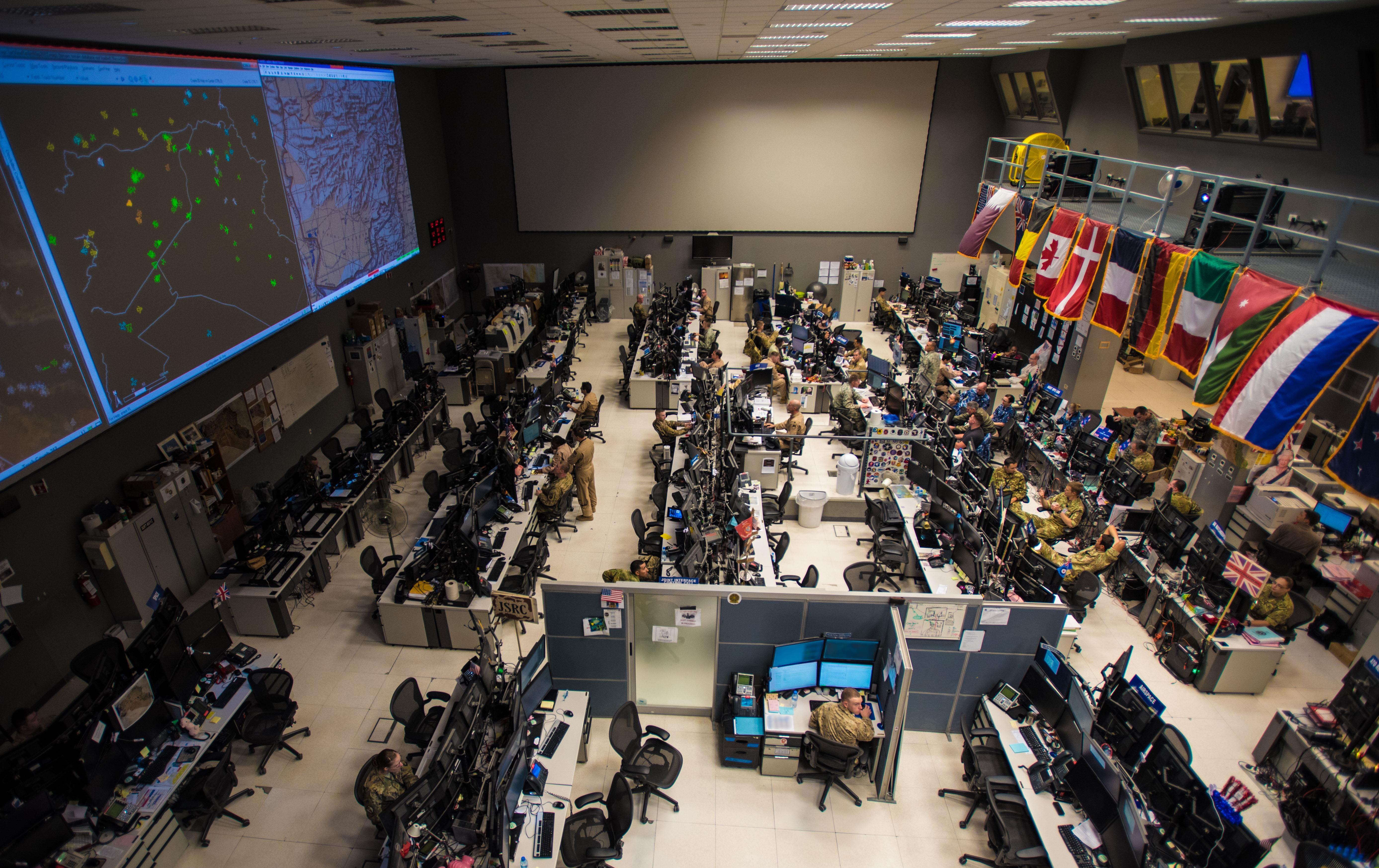
The Combined Air Operations Center at Al Udeid AB, Qatar, shown here, provides command and control of airpower throughout Iraq, Syria, Afghanistan, and other nations in the Air Forces Central Command region. Air Force photo by TSgt. Joshua Strang.
AL UDEID AB, Qatar—Even as the Air Force works to change the way it thinks about the space domain, space assets are being used every day to support ongoing operations in Iraq, Syria, and Afghanistan—and the experience here is preparing space professionals for future conflicts.
From the remotely piloted aircraft overhead to the troops on the ground, a significant number of the combat missions in this region rely on space assets, explained Capt. Jacob Thomas, deputy chief of the non-kinetic operations cell in combat plans at the Combined Air Operations Center.
“From a Western culture, you understand that there’s fiber everywhere. So, fiber is how I get on the Internet, it’s how I check my email … but out here, they don’t have that kind of infrastructure, so space carries a lot of the mission—not just for the CAOC, but out in the field for the Internet access itself, as well as the Navy and their ships at sea,” Thomas said.
Most of the RPAs flying in support of the mission here fly over satellite communications, Thomas pointed out, “so right there, space is touching the mission every single day, and in a huge way.”
The GPS constellation primarily supports precision-guided munitions—hundreds of which are released each month. But GPS is also critical for unmanned assets, which don’t have someone in the cockpit to be able to identify where they are and what they’re looking at, Thomas explained.
Additionally, troops on the ground carry GPS receivers “to make sure we know where they are,” and to help find them if they need help, Thomas noted.
Another space capability the CAOC relies on, Thomas said, is OPIR, or overhead persistent infrared. Though it was designed as a missile warning system to support the nuclear mission, it can also be used for battle space awareness, “to warn and protect our forces of significant events that are happening around the AOR.”
“Having that level of tactical awareness of what’s going on in the battlespace is really critical for our operations here, and without these satellites and their ever-evolving capabilities, that is something that we would lose in a big way,” Thomas said.
Col. Dee Morgan, director of space forces, said the use of OPIR is just one example of taking systems designed for strategic-level effects “and employing tactics that allow them to produce tactical effects for the soldier on the battlefield.”
About two and a half years ago, a space weapons officer like Thomas would have been assigned to the space cell, separate from the rest of the planning process. Now, space professionals are integrated into air operations centers around the world, Morgan said, which has helped the service as it moves away from the model of space as a service provider to space as a way to tailor effects for specific operations.
“There’s space for space, right? And that’s what you hear a lot of these days: Space is a warfighting domain, building a warfighting mindset. But at the end of the day, the reason you’re doing that is so you can create effects in the air, on the ground, at sea, and that’s really what we focus on here,” Morgan said.
And the integration has another benefit, Thomas said: Space professionals who deploy here and work in the CAOC are able to get a real understanding of how warfare works.
“When we get into a warfare mentality in space, the lessons that I’ve learned out here, and that hopefully all the space guys get to learn out here, is really going to benefit our domain in a big way,” he said.
Morgan agreed.
“This is where Air Force Space Command will learn how to warfight,” he said.
